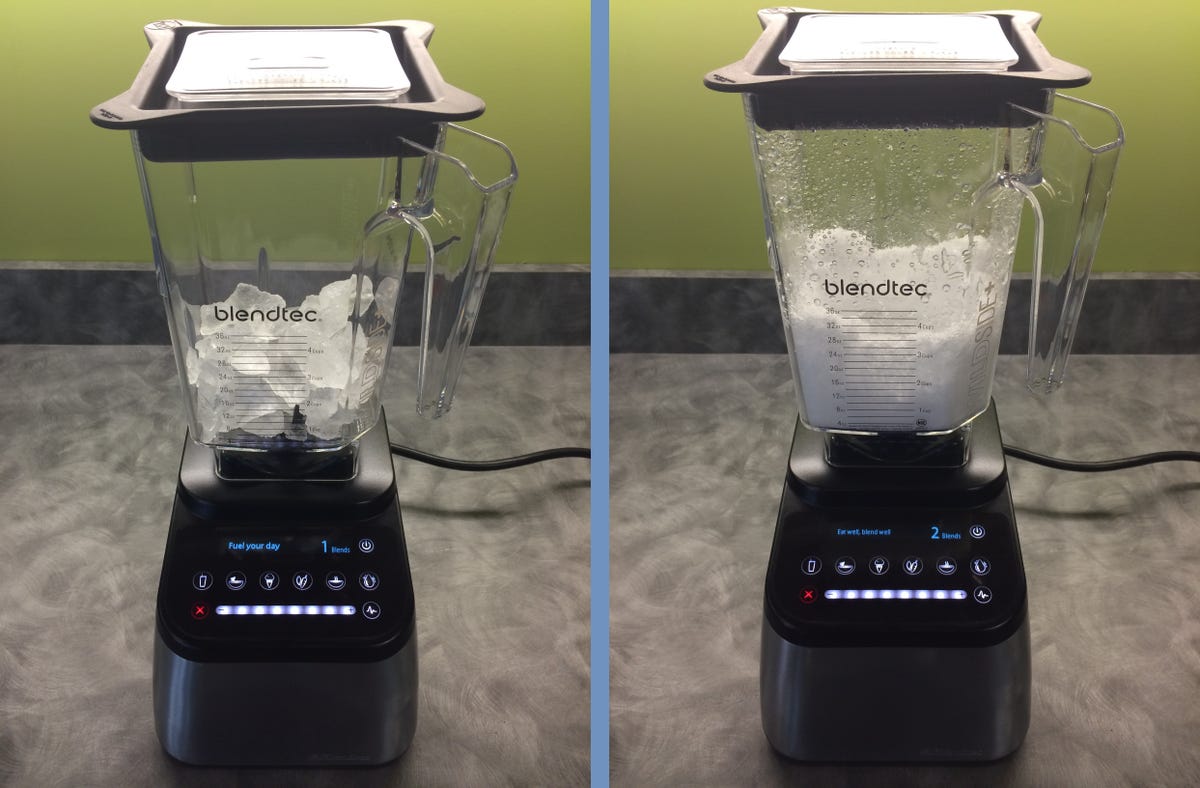 Why You Can Trust CNET
Why You Can Trust CNET Taking the Blendtec Designer 725 for a spin (pictures)
Ever wonder what a 1,725-watt blender is capable of? Take a look at these results, straight from our test kitchen.

A high-powered test kitchen test drive
Want to see what this $650, 1,725-watt Blendtec blender is capable of? Want to see what it isn't capable of? Click on through.
Blended ice
Our first test is the crushed ice test. The Designer 725 had no problem here, grinding our cubes into snow within seconds.
Perk of the job
Incidentally, well-blended ice makes for a mean mochaccino.
Smoothie in 3... 2... 1...
Next up was our smoothie test -- frozen strawberries and orange juice. Here's the before...
Ta-da!
...and here's the after. This smoothie was one of the smoothest ever blended in our test lab.
Batter up
Smoothies, mochaccinos, and now pancake batter? I'm suddenly craving breakfast.
Minimal globbage
Another solid result, with only a few powdery globs left behind.
Cleaning cycle
Time for a quick rinse. The Blendtec Designer 725 features a dedicated cleaning preset. Just add water and a bit of soap, then let 'er rip.
Whipped cream from scratch
Time for the whipped cream test, with cream, powdered sugar, and vanilla extract. A quick blend should produce a light, fluffy dessert topping that sticks to a spoon.
The results
Just what we're looking for.
Popeye'd be proud
Now we start getting into some of the more difficult tests. First up is pesto, with leafy spinach substituting for the basil.
The chunky stuff
Within just a few pulses, it's clear that the Designer 725 is up to the task.
Spinning into butter
Next up: nuts. Almonds, to be exact. In one of our most demanding blender tests, we see if our test subjects are capable of grinding almonds down into flour, and then on into almond butter. It's no easy task.
Flour power
The Blendtec Designer 725 had no trouble getting to almond flour...
Stay on target...
...but we kept pushing on, hoping to release the almonds' natural oils and arrive at the spreadable promised land.
Cavitation alert
The Designer 725 is designed to tell you if something's wrong. In this case, we encountered some "cavitation," which simply means that the almond flour/butter was stuck to the sides, away from the blades, creating a cavity around the bottom. Basically, the blender is telling us we need to stop and stir.
A quick scrape
With almost every blender, you'll need to stop periodically in order to scrape the sides.
Aha!
Keeping this pattern up, we started seeing almond butter within 7 or 8 minutes.
Not a good sign
However, after lifting the jar, we also noticed little bits of shredded rubber.
The culprit
That black rubber gasket surrounding the spindle was the problem. The Blendtec rattles around a bit when you use it, bringing the rubber into contact with some fairly ferocious friction. That caused it to burn up and shred. Yuck.
It gets worse
Unfortunately, the shredding compromised the jar's watertight seal.
It gets even worse
Also unfortunate: some of the rubber bits actually ended up mixed in with our almond butter.
Twister Jar
In fairness, for nut butter recipes, Blendtec recommends using its Twister Jar, with built-in side scrapers. We tested it out, and it does indeed work brilliantly. However, if you want one, you'll need to pay an extra $120.
The verdict
In the end, the Blendtec Designer 725 is monstrously powerful -- but shredded rubber is a pretty significant deal breaker. Read our full review for the whole story.

